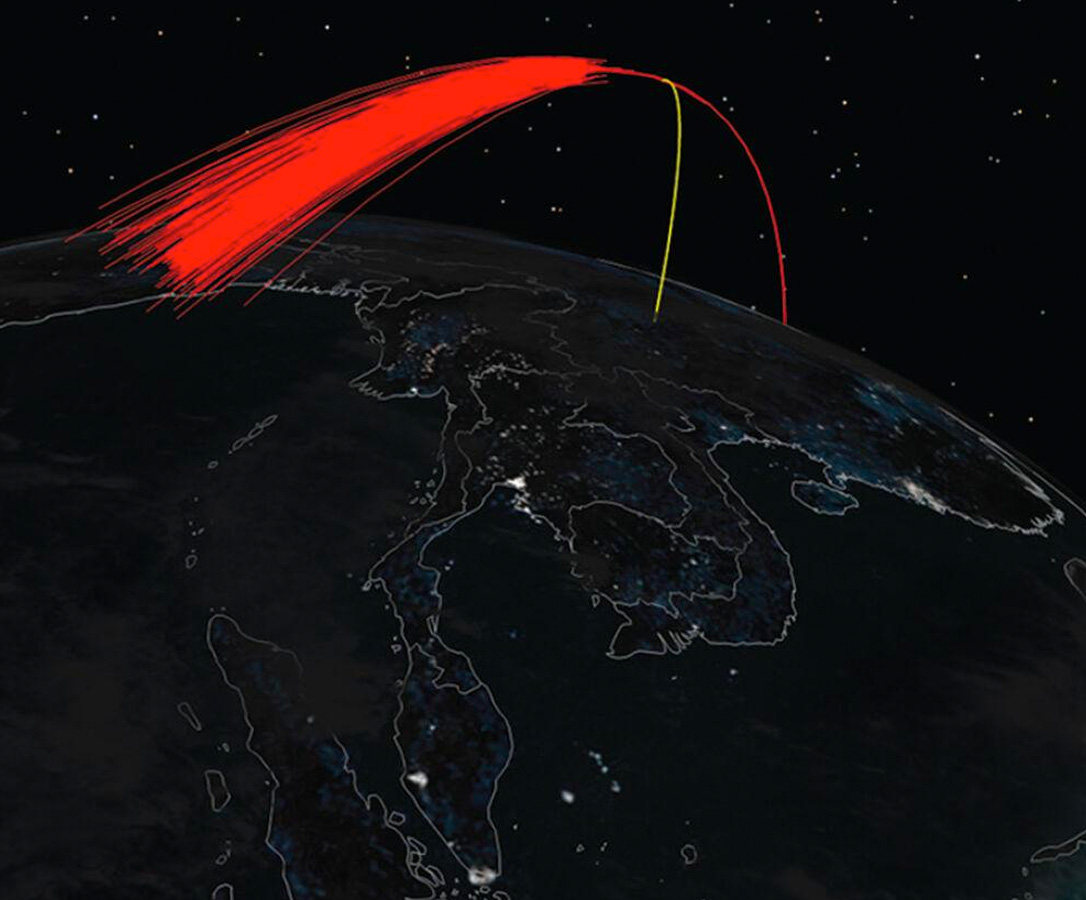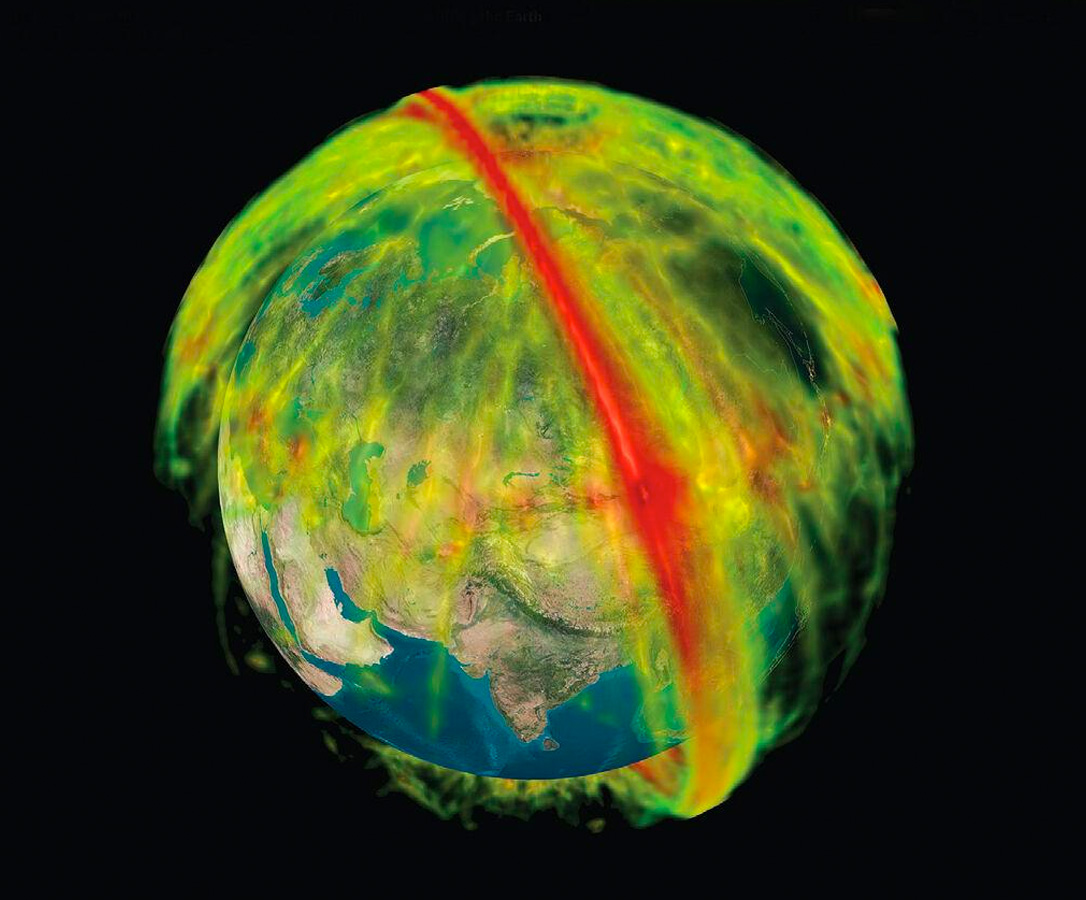Gen William Shelton, The Threat from Russia and China
Why You Should Care About US Space Command.
On January 11, 2007, China conducted its first antisatellite (ASAT) test. The kill vehicle impacted the nonoperational Chinese weather satellite Feng Yun 1C at more than 20,000 miles per hour, creating thousands of pieces of debris. I recall pushing back from the table in my operations center and saying to my senior staff, “This changes everything.”
The “space sanctuary” bubble had been burst.
At the time, I was the commander of the Joint Functional Component Command for Space, reporting to the commander of U.S. Strategic Command (who, at the time, had responsibility for Department of Defense [DoD] space operations). The main purpose of my job was to provide operational direction to all Department of Defense space units; in other words, all space-related Army, Navy, and Air Force space units reported to me for their operational orders.
We had two major concerns about this test. First, its success proved China’s capabilities in counterspace technology. Although it’s true that both the Soviet Union and the United States had limited antisatellite weapons as far back as the 1980s, both nations ultimately decided the collateral damage created by the use of these weapons would endanger even the shooter’s space assets. At the time, any nation with the necessary technical prowess and adequate resources could use space for scientific, commercial, and national security purposes. Maintaining space as a sanctuary of sorts was beneficial to all.
Our second concern was that the impact created thousands of pieces of debris: often called “space junk.” Some pieces are large enough to be trackable by space surveillance sensors, and at orbital velocities, objects even as small as a few centimeters can be hazardous to fragile spacecraft.
All of this relates to the question of why you should care about an issue that’s been in the news quite a bit in the past several months: U.S. Space Command and the decision to relocate it to Redstone Arsenal in Huntsville, Alabama.
Space Is No Longer Safe
You use space every day whether you know it or not. Your cellphone uses DoD global positioning satellites (controlled here at Schriever Air Force Base) to direct you to your destination and allow high-speed cellular service. Weather forecasts are more precise (can we say “precise” in the same sentence as weather forecasts?) because of commercial and government satellite data. Satellite radio provides entertainment options beyond the reach of terrestrial broadcast antennas. And, in the near future, satellite-based internet services are planned to be widely available on a subscription basis.
Also, our military counts on space to accomplish every mission. And, trust me, most of our military don’t realize they are using space services either. Satellites are used for intelligence collection, global communications, warning of missile launches, and monitoring activity in space. Every military operation I can conceive of is somehow dependent on satellite data before, during, and after the operation.


Bottom: Scattering the Ashes The Chinese anti-satellite missile test produced the largest recorded creation of space debris in history with at least 2317 trackable pieces (golf ball-sized and larger) and an estimated 150,000 debris particles. This image shows the debris field three months after the event.
Obviously, interruptions to these services have very profound effects on our ability to go about our daily lives and how effectively our military forces operate. It’s Space Command’s job to keep the peace in space and to protect our services from any weapons designed to interfere with our satellites.
So, how do we do this? A little history: The main agreement governing this activity is the Outer Space Treaty of 1967. It’s not very restrictive—as long as you don’t put weapons of mass destruction in space or try to put a military outpost on the moon, you’re good to go. However, under this “live and let live” international agreement, some countries—primarily China and Russia—are developing weapons that threaten every satellite in Earth’s orbit.
Unfortunately, our nation is not yet prepared to defend in space although national focus on the problem is improving. But that raises the question, how did we fall behind in our preparedness for conflict that extends to space?
The Threats
The national security space community has been particularly vocal about China’s aggressive counterspace activities since the Chinese ASAT weapon test in 2007. And, indeed, how we think about the use of space has fundamentally changed. China continues to produce new weapons that threaten spacecraft at all orbital attitudes, covering the spectrum of harmful effects from temporary and reversible to permanent damage. Ground-based jammers, of which China has many, can prevent essential communications and degrade GPS navigation and timing capabilities. High-powered lasers have been in research and development in China for many years; given sufficient power, these lasers could cause permanent damage to satellites in lower orbits. ASAT weapons can reach targets in lower orbits in 10 minutes or less, leaving little or no time for a defensive reaction. Even more concerning are so-called co-orbital weapons, which are satellites on orbit with jamming, destructive, or other nefarious capabilities.
Although this may sound a little like science fiction, it’s really just a peek into China’s counterspace aspirations. Some of these weapons are already operational; others are close. A few months ago, someone reminded me of another thing I said on the day of the Chinese ASAT test: “The Chinese are sending us a message but we’re not listening.”
Russia has been more subtle and less concerned about messaging but just as dedicated to building counterspace weapons. Their program is alarming. Recent close approaches to high-value U.S. satellites by Russia’s experimental satellites demonstrate technical abilities and malicious intent that should concern us all. Further, Russia recently tested a satellite that, at first, appeared to have one mission, but then it deployed an object that appeared to be a satellite killer.
Although not as sophisticated as the programs in China and Russia, Iran and North Korea are fielding counterspace weapons: mostly ground-based jammers. In March 2019, India tested an ASAT weapon that had actual impact. The Indian government claimed most of the debris fragments from this test reentered within a few days with the rest to follow within 45 days. Independent analysis revealed that a better estimate would be 45 weeks and that some debris could remain on orbit almost two years after the test; as much as 79% of the larger fragments tracked have altitudes at or above the orbit of the International Space Station.
A final overall threat is the increasing space traffic, especially in low Earth orbit—generally defined as altitudes below 1,240 miles. Large constellations of satellites to provide global internet services are planned, and these will add thousands of satellites to the mix. Unlike aircraft traffic control, there is no international traffic cop, nor are satellites required to carry equipment to report their position. The DoD has acted as the de facto provider of tracking data and collision warnings, primarily because only the DoD has the sensor network required to do the job. But, as commercial space tracking services become available and as the Commerce Department officially takes over space traffic management per a Presidential directive, there is hope for a better future.
The so-called “Big Sky Theory,” which says that space is so vast the probability of collision is very small, is no longer adequate. The Outer Space Treaty is now 54 years old. Maybe it’s time for more comprehensive “rules of the road” for space.
What We Are Doing
As a nation, we have been slow to respond to these developments. Senior government officials were hopeful that negotiations could lead to an understanding of the mutual dangers of warfare in space. Unfortunately, negotiations on space issues have been stalemated, largely because it is difficult to determine what constitutes a space weapon. For example, a satellite designed to service other satellites also has the potential to be used as a weapon like the Russian satellite mentioned earlier. Also, the vastness of space makes it difficult to have continuous or even near-continuous observation of potential threats. An agreement that can’t be verified is not much of an agreement.
However, as the collective intelligence on space threats was gathered and presented to senior officials in the second Obama administration, the wheels started to turn on strategies and policies to protect our satellites.
In Congress, on both sides of the aisle, momentum was building to legislate relevant organizational changes. The first step was the re-creation of U.S. Space Command to provide a dedicated combatant command focused on operating and defending the nation’s space assets. The mission is “to conduct operations in, from, and to space to deter conflict, and if necessary, defeat aggression, deliver space combat power for the joint/combined force, and defend U.S. vital interests with allies and partners.”
It’s a daunting mission, and the tools available are few. A good analogy is the U.S. Navy’s job of protecting U.S. interests on the oceans across the world. It’s a vast undertaking, yet that’s the job. The Navy, however, has treaties and norms of behavior that have been established over centuries to govern these activities.
The second step was to create the U.S. Space Force, a new military service focused solely on space. The mission here is to organize, train, and equip space forces to protect U.S. and allied interests in space and to provide space capabilities to the joint force. Its responsibilities include developing military space professionals, acquiring military space systems, maturing the military doctrine for space power, and organizing space forces to present to our combatant commands. The Space Force is organized under the Department of the Air Force.
It can be confusing. The short story is that Space Command has the command authority, as designated by
the commander-in-chief, to direct all DoD space assets. The Space Force, like all military services, organizes the units, builds the systems needed, and trains the personnel to operate those systems.
The Huntsville Decision
I confess that I was surprised by the decision to move Space Command to Huntsville, mainly because there is so much to recommend Colorado Springs as the permanent home for the command. (Petersen Air Force Base was named the temporary headquarters for the combatant command in May 2019.)
I believe I’ve gone through three of the five stages of grief: denial, anger, and bargaining. I think I’m somewhere between depression and acceptance. Once I got past the first stages, I decided I didn’t like the decision, but I also knew it wasn’t a devastating blow to Colorado Springs (is that bargaining?).
Space Command is projected to grow to a staff of around 1,400, so there is an obvious economic impact as those jobs move to Huntsville. The support contractor force that grows up alongside a combatant command also would relocate. The military personnel will move, but the civilian staff and contractor force get to choose. The continuing, and perhaps growing, presence of the Space Force commands and units will result in both civilian and contractor job opportunities. So, if history is any teacher, the blow of Space Command departing will be softened by those who decide not to move and by the additional jobs that the Space Force may bring to the area.
The Future’s So Bright…
As the Biden administration takes shape, there are many voices opining on the future of the Space Force. Interestingly, not much is being said about the future of Space Command. I wish I had a crystal ball because life would be much simpler. Nonetheless, my prediction is that the Biden administration will continue America’s efforts to protect our satellites. The rhetoric of the previous administration, which some view as being overly aggressive, likely will be replaced by more muted terminology. But the development of technologies to defend our essential space capabilities must continue. To do otherwise is akin to unilateral disarmament and effectively ceding the space domain to adversaries in conflict. In an era in which we depend heavily on space assets, this is almost unthinkable.
I fully admit to being a realist, not an idealist. I wish space would remain a sanctuary. I wish we could turn the clock back and not create yet another domain of warfare. But history says that, wherever mankind has gone, conflict has followed. Such is true for space as well.





